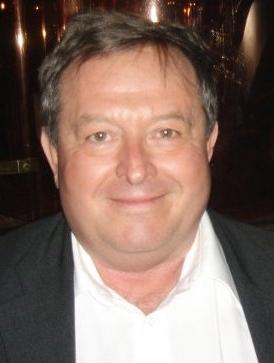event
Nano@Tech: Nanoplasmonics: The Physics behind the Applications
Primary tabs
Nanoplasmonics: The Physics behind the Applications
Prof. Mark I. Stockman: Center for Nano-Optics (CeNO) and Department of Physics and Astronomy, Georgia State University
E-mail: mstockman@gsu.edu, web: http://physics.gsu.edu/stockman/
Abstract: Nanoplasmonics deals with collective electron dynamics on the surfaces of metal nanostructures, which arises due to excitations called surface plasmons. The surface plasmons localize and concentrate optical energy in nanoscopic regions creating highly enhanced local optical fields. Nanoplasmonic fields are also ultrafast: changing on the femtosecond or even attosecond scale. Fundamentals of surface plasmonics will be discussed. The properties of the surface plasmons and their local fields are in the foundation of the numerous applications of nanoplasmonics to science, technology, environmental monitoring, biomedicine, and defense. A brief review of some of these applications will be given. We will discuss in more detail some of these applications: biomedical diagnostics including detection of pathogenic viruses, cancer theranostics, single molecule spectroscopy, and detection of explosives using the spaser (surface plasmon amplification by stimulated emission of radiation).
Bio: Mark I. Stockman received his Ph.D. and D.Sc. degrees from institutes of the Russian Academy of Sciences. He is a Professor of Physics and the Director of the Center for Nano-Optics (CeNO) at Georgia State University. He is a Fellow of the American Physical Society, Optical Society of America, and SPIE – The International Society for Optoelectronic Engineering. He has served as a Distinguished Visiting Professor at Ecole Normale Supérieure de Cachan (France) and as a Visiting Professor at Ecole Supérieure de Physique and de Chimie Industrielle (Paris, France), and also as a Guest Professor at University of Stuttgart (Germany), Max Plank Institute for Quantum Optics (Garching, Germany), and Ludwig Maximilian University (Munich, Germany). A major direction of his research is theoretical nanoplasmonics and strong-field ultrafast optics, and he is a co-inventor of spaser (nanoplasmonic laser). He is an author of over 190 major research papers and has presented numerous plenary, keynote, and invited talks at major international conferences. He gave lectures and taught courses on nanoplasmonics and ultrafast optics at many major international meetings, schools, and scientific institutions in US, Canada, Europe, Asia, and Australia.
Groups
Status
- Workflow status: Published
- Created by: Christa Ernst
- Created: 05/27/2015
- Modified By: Fletcher Moore
- Modified: 04/13/2017
Categories
Keywords
Target Audience

